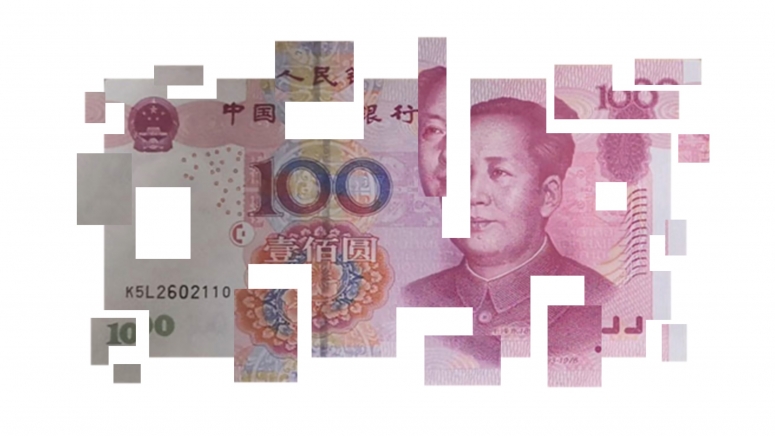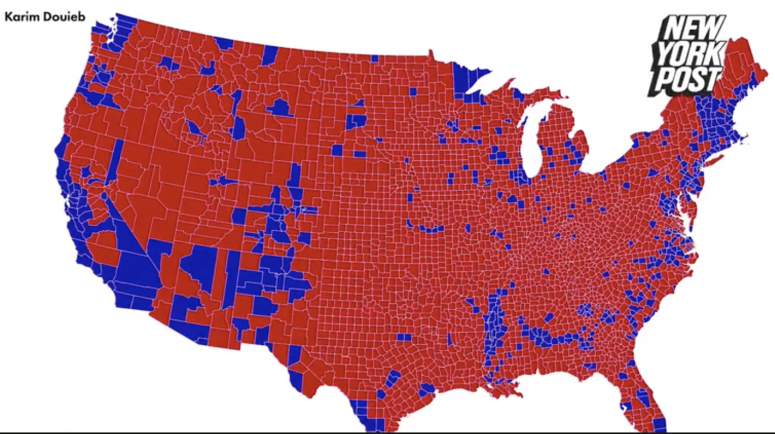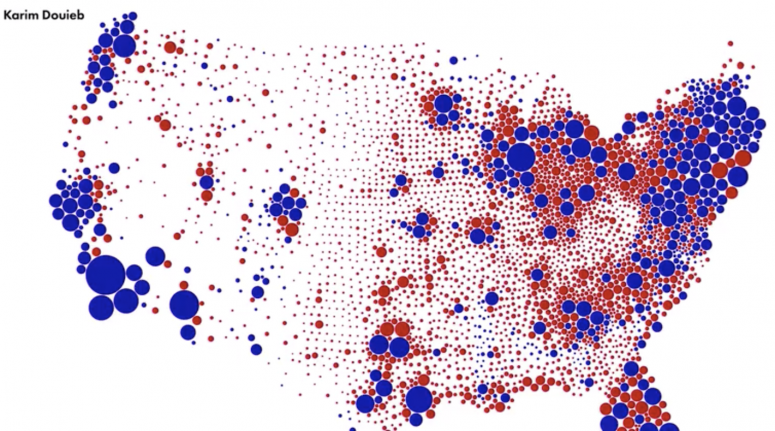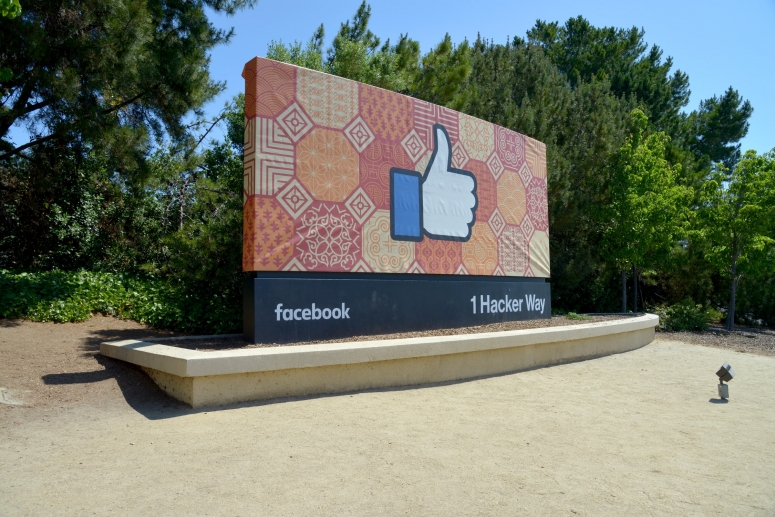In the lore of digital disruption, Eastman Kodak Co.’s downfall looms large.
Kodak was once one of the world’s most powerful companies. But it failed to act on digital cameras and online photo sharing, despite seeing the trends years before. (Kodak engineer Steve Sasson created the first digital camera in 1975.)
It’s an apt story to remember now as the digital money revolution rolls ahead at a time of momentous political transition. An incoming U.S. presidential administration faces an analogous situation: knowledge of what is happening but, currently, a lack of will to act.
Does China’s digital currency pose a threat to U.S. global economic leadership and the dollar’s dominance? Are U.S. leaders acting as Kodak’s were thought to have, with their heads rammed into the sand?
CryptoX columnist JP Koning’s answer to that would be, “No. Relax.”
Last week, Koning wrote that because central banks enjoy a de facto monopoly in domestic currency usage, they need not fear disruption by China’s or any other country’s monetary innovations, which means central bankers can afford to wait and learn from the first-movers’ mistakes before launching their own digital currencies. The dollar is doubly safe, he wrote, because “what glues everyone to [it] is a combination of an incredibly powerful banking vortex in New York City and America’s massive economy, not the medium on which dollars are printed.”
This assumes global currency markets are the only gauge of the competitive advantage China gets from its Digital Currency Electronic Payments (DCEP) system. It would measure success solely by the unlikely event that masses of people outside China will replace their highly liquid, universally accepted, reliably legal dollars with the currency of a closed, single-party Communist state.
But as a deep-dive report into the DCEP by Indian think tank Policy 4.0 shows, the real competitive, disruptive power of the digital yuan’s lies in how its programmable features will enhance the Chinese economy.
As China integrates this unique, peer-to-peer form of software-based money into networks of interconnected digital devices, it will extract vast benefits in economic efficiency, monetary policy effectiveness and data-gathering capacity. Also, by allowing it to bypass that New York banking vortex, the DCEP will ultimately give China something money can’t buy: total autonomy.
All of that poses real challenges to the U.S.
Crickets…
Where does projected President-elect Joe Biden stand on this? It’s not clear.
In a Foreign Affairs essay this week that laid out his plans to restore U.S. leadership of a world facing a litany of challenges, Biden made no mention of China’s digital currency.
He’s not unique in his silence. No candidates in the presidential primaries made public statements about China’s forays into digital currencies and blockchain technology.
This is not to say people in power aren’t thinking about these issues. In a “currency war games” simulation at Harvard last year, Gary Gensler, a crypto-savvy former Commodity Futures Trading Commission chairman who was named this week as Biden’s head financial regulation adviser, joined former Treasury Secretary Lawrence Summers and others to explore the threat foreign digital currencies pose to U.S. interests.
Still, the topic doesn’t naturally foster political urgency. U.S. dominance of the global financial system, and the unique international gatekeeping powers that come with that, have been in place so long that most people in both government and business take it for granted as a given.
Many in the crypto community have their heads in the sand, too. It’s true China’s government-led DCEP and blockchain services network go against the decentralized principles of bitcoin. But so what? Whether we like it or not, China’s moves could massively transform the world of money. We must all sit up and take notice.
An economic growth engine
Does this sound familiar? In 1990, it was hard to imagine billions of camera-touting consumers would find a new filmless means of capturing images.
How might China, wielding the monetary equivalent of a digital camera, give the U.S. its “Kodak moment”?
Well, to start, the DCEP will give China a stronger, faster economic recovery from the COVID-19 crisis than the U.S, by allowing for targeted, programmable monetary stimulus, with cash disbursements directed to certain people for prescribed uses only and not, for example, to the shadow lending industry the authorities have struggled to contain. Although the history of Communism tells us that sustained, centrally planned credit ultimately leads to poor resource allocation, in the immediate term this targeted approach will be far more effective than the Federal Reserve’s blunt quantitative easing tool. This, in turn, means China’s future debt burden could be more manageable than that of the United States.
Inserting programmable money into an internet-of-things-powered decentralized economy will also give China a powerful economic advantage. It will facilitate distributed energy markets, smart cities, “industry 4.0” production plants and resource-efficient “circular economy” systems.
With DCEP, China’s supply chains will become hyper-efficient, giving it a big advantage over other countries’ production sectors. And as those models extend into China’s international One Belt One Road initiative, foreign dependency on its production processes could grow, giving Beijing geopolitical clout.
Out of this, China will forge financial autonomy. Its digital currency will eventually be interoperable with other tokens and blockchains, allowing its businesses and their foreign trading partners to move money across borders without using dollars as an intermediary. They’ll bypass New York, in other words.
Solution: Open money
This won’t happen overnight. But the effect on confidence in the U.S. could arise within the next four years.
How should Washington react? Christopher Giancarlo, former CFTC chairman and the founder of the Digital Dollar Foundation, is pushing for a digital dollar that would integrate constitutionally enshrined privacy protections, making it more appealing than the digital yuan, which many fear will become a Beijing surveillance tool.
But will people truly trust the U.S. not to monitor digital dollar transactions? After all, as Jennifer Zhu Scott, chair of the Commons Project, noted in this week’s Money Reimagined podcast, global finance is already subject to a comprehensive U.S.-led system of surveillance.
So, while we’re right to worry about a Chinese “panopticon” ingesting people’s identifying information, that’s not the data threat the U.S. can or should compete with. In the same podcast episode, Policy 4.0 CEO Tanvi Ratna said the bigger issue is how troves of DCEP-generated anonymized data will enable Chinese businesses to extract huge efficiencies and unlock innovation across decentralized economic systems.
There may be a way for the U.S. to compete here. But it will require a radical, disruptive solution.
The answer is that Washington must embrace and encourage an open money system, a world of interoperable, freely accessible open-source tokens and blockchains – everything from a digital dollar to bitcoin – and encourage innovators to use and build new products on top of them.
We know from the internet that open systems will beat closed systems in powering innovation.
And while this approach fits the traditional U.S. stance on competition, market liberalism and free trade, it represents an existential threat to China’s ruling Communist Party.
The problem is that if Kodak struggled to kill its then-lucrative film business in the nineties, it’s hard to imagine the U.S. giving up the drug of dollar supremacy.
Good luck, President Biden.
An event not to miss..

On Wednesday, Nov. 18, at 8:00 a.m. ET, I’ll be moderating a panel as part of a global virtual event in a CryptoX partnership with Policy 4.0, whose report is mentioned above.
The topic: “China’s Digital Yuan and Currencies of the Future.”
Panelists are the Central Bank of the Bahamas Governor John Rolle, Policy 4.0 CEO Tanvi Ratna, OMFIF Advisory Council member and author David Birch, Belt and Road Blockchain Chief Architect Pindar Wong and Tommaso Mancini-Griffoli, the deputy division chief in the International Monetary Fund’s Monetary and Capital Markets Department.
Don’t miss it. Sign up here.
Land doesn’t vote
Today’s graphical section isn’t exactly your typical finance-themed chart. But given that we’ve just come out of the most contentious and divisive U.S. presidential election in living history, I thought this was worth exploring. It offers a meta theme about data visualizations generally, which are a common element of how cryptocurrency and blockchain information is presented.
The way we understand our world and the decisions we make about it can be greatly influenced in this digital age by how data is presented. The images below offer a reminder that all those visualizations are merely abstractions of reality and that, in the act of abstracting the data and giving a format and context that we believe is meaningful, something gets lost. But it also speaks to how creative re-renderings can offer additional context to make things clearer.
The first part of this animation from data visualizer Karim Douieb (republished by the New York Post) is probably familiar to anyone who was glued to TV news and political websites for the preceding days. It shows the county-by-county vote result across the U.S., with solid versions of Republican red and Democratic blue showing confirmed results and the lighter versions showing who has the lead at that time. It’s familiar because maps like this always look far more red than blue.

But land doesn’t vote. People do. So, given that population density differs so dramatically across the country, using standard two dimensional maps of geographic area to display something about the choices of humans in those places is inherently misleading. The unit of accounting for a vote tally is a person, not an acre of land.
Here’s where simply adjusting the context by adding another dimension to the measurement makes a difference. So, in the second image we see each county represented by a bubble whose size is determined not by its area but its population. Not surprisingly, there’s a lot more blue.

Global town hall
SAME OLD, SAME OLD. If there’s one elephant in the room bigger than China’s digital currency, it’s the internet’s core problem of centralized data and content control. So, it’s disappointing to read in the MIT Technology Review that, although a Biden presidency is expected to continue with the Department of Justice’s recent lawsuit against Google, any attempts to address the core problem are going to be very limited.
We all know something’s wrong with the excessive clout wielded by big internet firms, but almost every demand to address the problems attacks the symptoms, not the cause. In effect, in recognizing the unique power these firms have without tackling it, these actions just reinforce their status. There’s very little discussion of the underlying reality that the business model employed by social media platforms like Google, Facebook and Twitter is one of surveillance capitalism.
We, the humans in the system, are essentially mined for data and then subjected by algorithms to attempts to modify our behavior in the service of advertisers. That makes the ambiguity of the social media firms’ legal status so important to resolve. Section 230 treats them as platforms rather than publishers, so they are exempt from defamation and other liability for third-party content, but it simultaneously affords them the right to remove, highlight, rank and generally curate the content as they see fit. That’s possibly well intended, and without that balance we wouldn’t have services like Wikipedia. But when you combine the unique power that this duality affords the big internet firms with the abuse of privacy and data-mining that feeds the most successful business model in history, something has to give.
One solution lies in government supporting developers that use technologies such as blockchain to enable more decentralized business models. That way, content creators and audience are empowered to meet each other without the platforms’ intermediation and without their data being exploited by a centralized middleman. The problem is, how do you get people to leave the communities to which they currently belong and migrate to one that far fewer people use?
An alternative solution lies in legal action and/or legislation that either breaks up the platforms’ monopolies or regulates them as utilities. This would require nuanced dealings with freedom of the press issues and to distinguish, subjectively but fairly, between harmless platforms and those that have too much power. Which is the best route is open to debate. We just need to actually have the debate. For that, we need to see the elephant in the room.

A CYPHERPUNK-IMAM ALLIANCE. This development in Europe scares me. It’s also one that, ironically after the last item, finds me on the side of tech firms. Government intelligence agencies want to prevent hardware providers and apps from encrypting information and want backdoors to users’ messages. The efforts have rightfully met with stiff resistance from firms protecting their users’ privacy. Yet, as the Bloomberg story says, government officials can often find public support as people fear terrorists and other bad actors.
Now, as a number of European Union governments promote a resolution calling for “technical solutions for gaining access to encrypted data,” the debate is swerving into dangerous issues of religious freedom. It seems the backdoors that law enforcement want are aimed at Muslim leaders and communities in growing backlash against Islam following recent Islamic terrorist attacks on the continent. Mixing data surveillance with religious targeting seems like a slippery slope to me.
This creates an interesting alliance. The strongest advocates of digital privacy and the right to encrypt messages are the cypherpunk communities from which Bitcoin emerged – not exactly bedfellows with Islamic imams. But such is the cross-section of interests privacy rights covers.
It’s also relevant to the money debate. Encryption enables peer-to-peer communication without a third-party intermediator, and money transactions are just another form of communication. So this ultimately goes to the heart of the battle that Bitcoin was created to fight – for the right to censorship resistance.
Relevant reads
How Ant’s Suspended IPO Is Related to China’s Digital Yuan. With the planned initial public offering of his giant fintech company Ant Financial, Jack Ma was set to become the 11th-richest man in the world, leapfrogging the heirs to L’Oreal’s and Walmart’s fortunes. But then, surprisingly, the IPO was shut down by the Chinese government. Now, as David Pan reports, it seems clear the Chinese government attacks on Ant Financial are directly connected to its digital yuan project, which is partly motivated by a desire to restore government control over payments, money and banking.
Bitcoin’s Options Market Shows Strongest Bullish Mood on Record. What a run bitcoin has had. Above $16,000 at the time of writing, it was hovering around $10,000 at the end of summer. And with a series of high-profile investors talking up the cryptocurrency’s value as a hedging instrument, it looks like investors are betting on there being more to come. Omkar Godbole reports here that the so-called put-call skew, or the spread between prices for an option to sell bitcoin at a fixed price in the future and the price for option to buy it in the future, is now at a life-time low, which is a very bullish signal.
ECB’s Lagarde Has ‘Hunch’ Digital Euro Will Launch in 2-4 Years. More signals that the digital euro is coming as the European Central Bank’s President Christine Lagarde offers a relatively short time frame for its launch. Brad Keoun reports.
Bad Loans, Bad Bets, Bad Blood: How Crypto Lender Cred Really Went Bankrupt. The collapse of Cred, with $100 million in losses, sent shudders through the relatively young crypto lending industry this week. Here, Nathan DiCamillo offers a thoroughly researched “tick-tock” on the series of events, missteps and alleged fraud that led to its demise.





